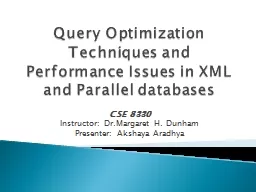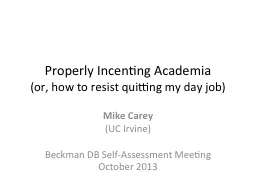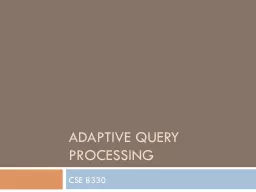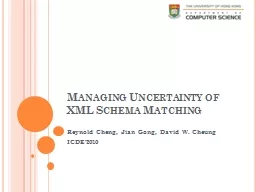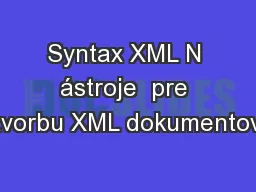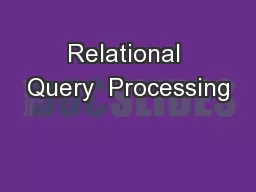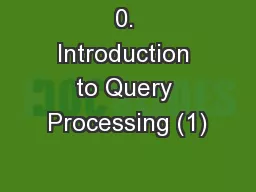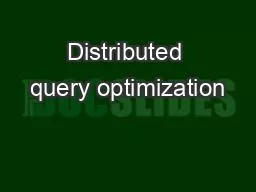PPT-Query Optimization Techniques and Performance Issues in XML
Author : calandra-battersby | Published Date : 2016-06-25
CSE 8330 Instructor DrMargaret H Dunham Presenter Akshaya Aradhya Introduction Query optimization in XML databases Query optimization in Parallel databases Comparison
Presentation Embed Code
Download Presentation
Download Presentation The PPT/PDF document "Query Optimization Techniques and Perfor..." is the property of its rightful owner. Permission is granted to download and print the materials on this website for personal, non-commercial use only, and to display it on your personal computer provided you do not modify the materials and that you retain all copyright notices contained in the materials. By downloading content from our website, you accept the terms of this agreement.
Query Optimization Techniques and Performance Issues in XML: Transcript
Download Rules Of Document
"Query Optimization Techniques and Performance Issues in XML"The content belongs to its owner. You may download and print it for personal use, without modification, and keep all copyright notices. By downloading, you agree to these terms.
Related Documents

